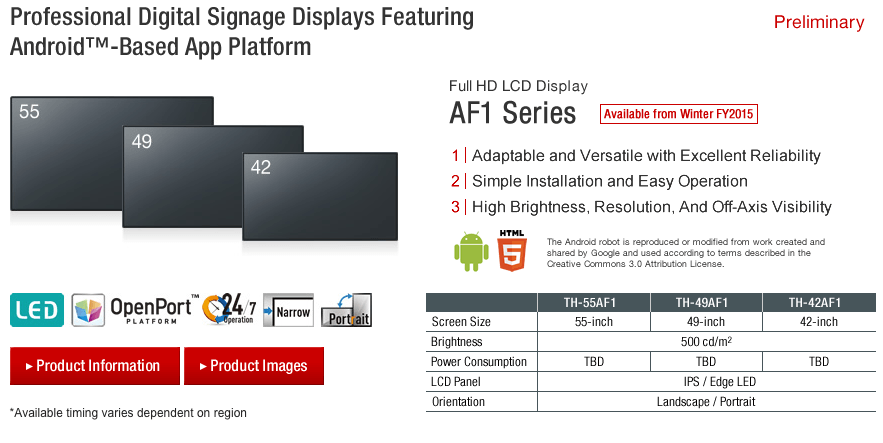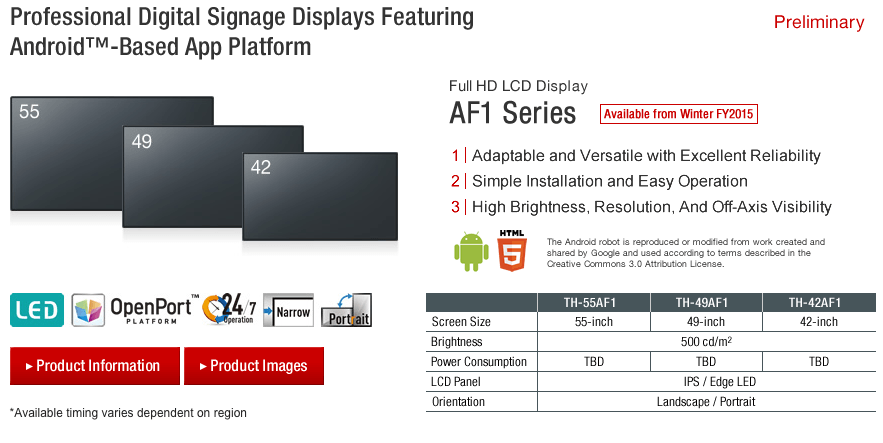
Panasonic Adds Built-In Media Players To Displays; Includes Android Support
January 25, 2016 by Dave Haynes
 Panasonic is about to join several other major display manufacturers in marketing commercial display panels with built-in System on Chip media playback capability.
Panasonic is about to join several other major display manufacturers in marketing commercial display panels with built-in System on Chip media playback capability.
Starting in April, AF1 series displays (42, 49 and 55-inch sizes) will have an ARM 1GHz quad-core processor with 1 GB of RAM and 8 GB of internal storage. Panasonic says the playback device will run Android or run off its HTML5-based OpenPort Platform. The units will have built-in WiFi.
The announcement is coming out of Europe, as the offer will make its debut at the ISE show next month in Amsterdam. In doing a little poking around, it appears Panasonic started talking up these displays at InfoComm in Orlando, seven months ago, but the market release of the units has been delayed until Q2 2016.
“AF1 Series is Google certified, which allows software companies to create specialised apps for digital signage and other applications,” says Enrique Robledo, European Marketing Manager for Panasonic. “The Verified apps can be installed remotely from the Panasonic app server or added locally using a USB or micro SD Cards. Software partners who are developing apps for the Panasonic Open Platform will be announced as their apps become available.”
Panasonic suggests the display’s open API allows users to control the displays through third-party software running on the open port platform. “The OpenPort Platform gives professionals the power to customize and update content very easily while adapting to changing needs in the future. Combined with Panasonic’s brilliant picture quality and proven reliability, the AF1 Series presents a cost-effective and self-contained solution for high-impact digital signage,” says Robledo.
Panasonic’s announcement comes three years after Samsung released its Smart Signage SoC panels, and LG has since followed with its own offer, as has Philips. So the company is a little late to that party. The ability to run Android is distinct (the others are essentially thin clients calling and running web pages), but at 1 GB of RAM, the players are arguably underpowered. External devices, such as VIA’s commercial grade Android player, have twice the RAM.
It’s also possible to get Android kinda-sorta built-in using NEC’s open pluggable displays, which can snap in a slot-loaded Android/ARM player.
I’m not sure, at all, what Google-certified means in the context of these displays, but will ask at ISE is a couple of weeks.
It’s way too late to get much if any marketing buzz out of SoC panels, but it is starting to look like having panels with SoCs built-in is becoming a standard, as they don’t add a lot of cost and are a viable option in less-demanding circumstances like menu displays and directories.



Leave a comment